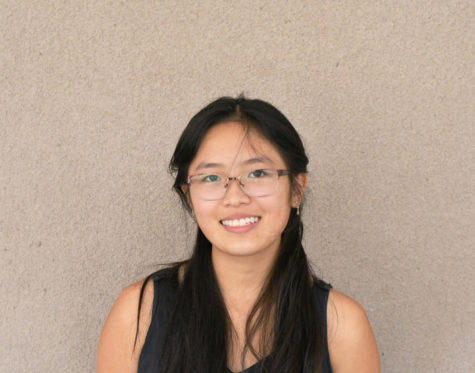Filasky utilizes home tools, makes Ceramics more accessible for students
January 21, 2021
For students of art teacher Hayley Filasky, class usually consists of a short check-in on Zoom, and then an independent period of work—a far cry from the normal experience of working in the studio with classmates nearby. This new normal has come after extensive reorganization on Filasky’s part, especially since Ceramics and the other two art classes that she teaches are extremely hands-on.
“This year, when I heard that I was teaching Ceramics online, I initially thought that it wasn’t possible,” Filasky said. “I really had to brainstorm and reach out to other Poway teachers in order to figure out how we could make the class fun and affordable for students.”
These goals have been the basis for changes made to AP Studio Art, Ceramics, and Design and Mixed Media classes, as well as the preservation of elements that have stayed the same. Like before the pandemic, by the end of each class period, students are supposed to have finished that day’s assignment. Unconventionally, however, these assignments are usually demonstrated through Youtube videos filmed from Filasky’s own kitchen counter. These uploads have been the main form of contact between her and her students since the beginning of the year, besides sporadic drop-off and pick-up days where students receive their supplies.
“I was supposed to open up glazing to small groups of students in January,” Filasky said. “But then the board meeting happened and they shut down the school. The only time I’ve seen students face to face was when they dropped off their projects for glazing.”
Beyond just these differences, this year, students who had elected to take Ceramics, AP Studio Art, or Design and Mixed Media have also found themselves without the standard studio tools that they would normally have at their disposal.
“The students each got a kit [to take home],” Filasky said. “They got clay in a Ziploc bag and some makeshift tools.”
Wheels, water buckets, and other conventional studio elements are all out of the reach of many students, so Filasky has done her best to bring supplements to her students, in the form of popsicle sticks, string, and other supplies that can be found at home. During class, the usage of household items, such as old pillowcases as a clay canvas, is also encouraged. Boards and old boxes are often repurposed for students’ home studios, as demonstrated by Filasky over YouTube.
“[In the videos] I’m working with the same exact craft sticks and skewers and makeshift tools that my students are,” Filasky said. “I try to make things as real as possible, in order to show them that it’s completely possible to make art without full access to a studio.”
Despite workarounds, however, there has been no way to properly supplement the experience of glazing, which is a finishing touch that has been fused to a ceramic body through firing. Glazing usually renders earthenware vessels suitable for holding liquids, but many ceramics students have had to go without in this aspect.
“Usually, we would be glazing all the projects,” Filasky said. “But to distribute the different glazes to 120 students times 20 projects was just too complicated, so this year they’re only required to do at least one project glazed.”
As difficulties for students have arisen, Filasky has taken each issue as it came up. One problem that she’s still working on solving is bridging the lack of collaboration between classmates.
“They can’t see what other people are working on,” Filasky said. “So finding little problem-solving tips for the issues that pop up has been difficult.”
This has been a common experience for many students, including Norah Nguyen (12), who has a second period Ceramics class.
“I think it’s a lot more of individual work and learning,” Nguyen said. “Because the teacher isn’t with you the whole time, so there’s more trial and error to figure out myself.”
Filasky’s main solution to this so far has been opening up communication and encouraging students to come to her with the problems that they have through email and Canvas.
“That first month and a half were really challenging,” Filasky said. “Especially since I was teaching the fundamentals of the class. But now that we’re moving into projects, it’s been a lot more manageable.”
So far, her adjustments seem to have been successful, especially in facilitating her classes as a point of relaxation for students who might otherwise be on-screen for four periods straight. This has held true for Nguyen, who considers even the class time troubleshooting to be an added bonus.
“I do find it more fun [when I have to figure certain things out myself],” Nguyen said. “Overall, I think [the class] is especially convenient, because being able to take a break from other work any time of the day is really nice.”
Filasky has said that she hopes to maintain this balance, especially in moving forward into the second term.
“There are some pros and cons to [online teaching],” Filasky said. “Some of the students are spending more time than they usually would in an 80-minute class period. It’s nice to know that people can still find comfort in creating, especially now.”


